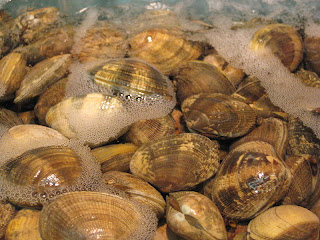- They provide food for other animals.
- They eat dead animals and plants.
- They help pollinate plants.
- Some make honey or silk.
Some insects can also be harmful because:
- They sting.
- They transmit diseases.
- They damage crops.
- They eat our food, clothes and wood.
 |
| Insects are food for other animals. Photo from Life123 |
 |
| Insects pollinate plants. Photo from Wikipedia |
 |
| Bees make honey. Photo from Lachie Mathieson |
 |
| Worms make silk. Photo from treehugger |
 |
| Some insects sting. Photo from Adventure Malaysia |
 |
| Some insects transmit diseases. Photo from Scientific American |
 |
| Insects damage crops. Photo from Kansas State University |
 |
| Termites eat wood. Photo from Cascade |










































